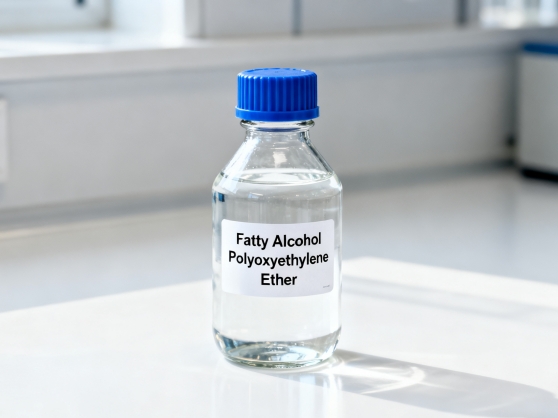
Fatty Alcohol Polyoxyethylene Ether, also known as Fatty Alcohol Ethoxylates (or Ethoxylated Fatty Alcohol) and commonly referred to as Emulsifier AEO, is a class of non-ionic surfactants produced through the addition reaction between fatty alcohols and ethylene oxide. Its general chemical formula is RO(CH₂CH₂O)nH, and its CAS number is 68439-51-0.
This surfactant exhibits excellent wetting, emulsifying, dispersing, cleaning, and solubilizing properties. The structure contains both hydrophilic (polyoxyethylene chain) and lipophilic (fatty alcohol chain) parts, enabling it to effectively reduce surface tension and stabilize emulsions.
Depending on the length of the polyoxyethylene chain, Fatty Alcohol Polyoxyethylene Ether can be categorized into various grades, such as AEO1, AEO2, AEO3, AEO4, AEO5, AEO7, AEO9, AEO10, and AEO23. Each grade has a distinct hydrophilic–lipophilic balance (HLB) value, making it suitable for different emulsification, wetting, and detergency applications.
Fatty Alcohol Polyoxyethylene Ether is valued for its outstanding solubility, stability, and versatility across many industries.
These properties make AEO-type surfactants reliable for cleaning, emulsifying, and stabilizing a wide range of formulations in both industrial and consumer applications.
Fatty Alcohol Polyoxyethylene Ether is synthesized through a catalytic ethoxylation process, in which ethylene oxide reacts with natural or synthetic fatty alcohols (such as lauryl, cetyl, or stearyl alcohol). The reaction is carried out under controlled temperature and pressure with an alkaline catalyst like sodium hydroxide or potassium hydroxide.
By controlling the amount of ethylene oxide added, manufacturers can tailor the EO chain length and thus adjust the product’s hydrophilic–lipophilic balance (HLB). Shorter EO chains result in more lipophilic (oil-loving) products suitable for emulsifying oils, while longer EO chains make the surfactant more hydrophilic (water-loving), ideal for aqueous formulations.
The Fatty Alcohol Polyoxyethylene Ether family includes multiple emulsifier grades designed for different performance needs:
Each emulsifier type differs in EO content and molecular structure, providing flexibility for specific formulation goals.
Fatty Alcohol Polyoxyethylene Ether has a broad spectrum of industrial and consumer applications due to its stable performance and excellent surface activity:
Thanks to its balanced performance, Fatty Alcohol Polyoxyethylene Ether remains one of the most versatile nonionic surfactants across multiple industries.
Fatty Alcohol Polyoxyethylene Ether (AEO) stands out as a multi-functional, biodegradable, and highly efficient nonionic surfactant. From household detergents to textile auxiliaries and polymer emulsions, it delivers outstanding emulsification, stability, and compatibility with various systems. Its customizable EO chain length allows precise control of hydrophilic–lipophilic balance, making it adaptable to numerous industrial requirements. With growing emphasis on sustainability and safety, Fatty Alcohol Polyoxyethylene Ether continues to play a vital role in developing modern, eco-friendly formulations.